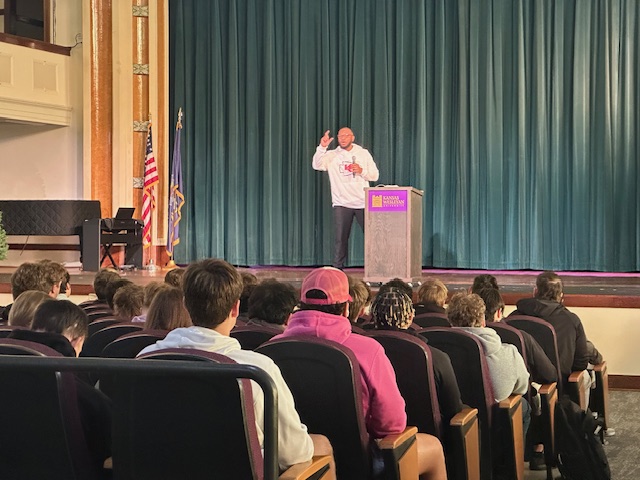Smoky Hill River Project | Ecosystem
Written by Melissa Anderson on March 22, 2022
All living organisms need water to grow and survive. Water is one of, if not the, most important component to an ecosystem. So that in itself should answer the question; Why would a river running through Salina, Kan. matter?
One of our neighboring states has found the benefits of a downtown river and riverwalk. In Oklahoma City, Oklahoma, a 7-mile stretch of the North Canadian River was transformed into what is now the Oklahoma River. Dams at Eastern, Western and May avenues raise the level of the river. Locks allow boats to navigate the entire 7-mile length of the river project. Trails have been added for runners, walkers, skaters and bikers. They offer kayaking from the banks at certain entry points. This Oklahoma restoration project brought visitors, ideas, entrepreneurs, families and yes, an ecosystem to town.
Like Oklahoma, Salina’s downtown once had a river running through it. Because of flooding in the 1950s and 1960s, the river was diverted with a manmade bypass channel, accompanied with a dyke that runs along the river. That original river channel still remains, but it is empty and dry. There is no water, no fish, no grasses or bugs. There are no trails. The life of a river does not exist.

Walking along a nature trail offers adventure.
A recent interview with Dr. Stephanie Welter, KWU Associate Professor of Biology, Chair of the Department of Biology, provided some insight into the ecological benefits of a river. Dr. Welter was asked “What native Kansas wildlife benefit from river channels”. Welter stated “A plethora of wildlife benefit from river channels (and the surrounding river banks, especially if vegetated or wooded), including invertebrates (crayfish, insects of all types), fish, amphibians, reptiles, birds, and mammals. So, all wildlife benefit from a river!” She also added “The river provides habitats, food sources, and water sources for wildlife. Riverbanks (if not filled in by concrete) can be burrowed into by rabbits, muskrats, groundhogs (= woodchucks), and badgers for homes and nesting places. When those burrow-building mammals abandon their burrows, other mammals, such as foxes, raccoons, and bobcats, can move in. River banks can also provide corridors for terrestrial mammals, like deer, coyotes, bobcats, to move among habitats without having to cross busy roads. Birds, such as Great Blue Heron and kingfishers, can hunt for fish in the rivers. And, of course, fish, amphibians (like frogs), reptiles (turtles and some snakes), and lots of invertebrates (crayfish, insects, aquatic worms, etc.) use the river itself for feeding, breeding, and living out their lives! These are just a few examples of the benefits of rivers to Kansas wildlife.”

A river full of water, brings life to it’s surroundings.
In addition to wildlife benefits, experts show people’s mental and physical health also benefit in many ways from water. I asked Dr. Welter “Would you agree or disagree that having an active river in downtown Salina, would provide psychological and physical benefit to Salina citizens and visitors?”. Dr. Welter said “I agree that water is very important to the mental and physical health of humans, and therefore, any way to make water more accessible to people is great. And I do think that people will be drawn to the river if there are opportunities for walking alongside it, kayaking on it, fishing in it, sitting alongside it, etc. But, I think this is a tricky question and proposition because a project like this will need to be planned well in order to allow the river to be accessible and used by people in a mindful way AND also allow wildlife to thrive. It is often very difficult to balance these two demands of human recreation (and all the things that come with that – litter, fossil fuel consumption by-products if gas boats allowed, noise pollution, salts and other chemicals from the nearby parking lots and roadways washing into the river, etc.) and wild flora and fauna needs.
Welter added, “Such a river through a town can be designed and managed, but it will take work and education and probably, some rules, about its use (maybe only electric or non-motor vehicles allowed on it, for example). And if walkways are provided, they need to be placed close enough for people to enjoy the riverlife, but far away enough so that animals can still benefit from the river and riverbanks without huge disturbance, etc. I am sure the engineers hired to oversee this project are working to try to balance these demands, so that both humans and wildlife can benefit. And hopefully, people will go enjoy the river through downtown Salina, as they become familiar with it. Bringing nature into an urban area is challenging, but can be very rewarding, too.”
More specifically, Welter said, “In regards to safety concerns for humans being around water, this would be another issue needing to have oversight and careful planning so that the human visits to the river will be safe!”
Another safety concern, and one that seems to keep showing up, is sediment and trash in the dry river beds that exist where the Smoky Hill River should be running. In fact, over the past several years, Kansas Wesleyan University students have been involved with Fall Fix-up, where community members and other volunteers help clean up trash where it has pooled along the dry river bed, following heavy rains.
Let’s get deeper into the weeds. Vegetation is a benefit from a river. The shade, litter, nutrients and large wood bring stabilization to the banks of the river. Native fish will live in the river and bring a cycle of life and vegetation.
The current Salina water diversion has threatened one of the Earth’s highest biological diversities and is no longer a natural river system. This important habitat for animals and plants would offer great connectivity to humans as well.
For more information about the Friends of the River, Smoky Hill River Project, visit the link.
In additional support of the Salina Smoky Hill River project, KWU students are encouraged to participate in the annual weekend of service.





